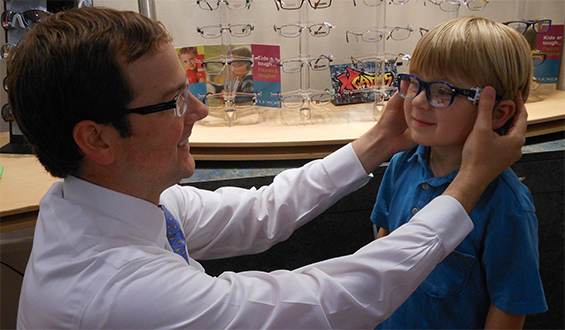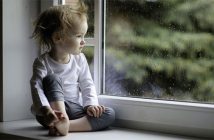
Jeremy A. Guggenheim, Ph.D. of Cardiff University in Wales, conducted a study with colleagues that found first-born individuals were more likely to be nearsighted than later-born individuals in a family.
Published online by JAMA Opthamology, the research used a sample of adults in the UK to find that the association was larger before adjusting for educational exposure, which could mean that parents reduced their investment in the education of children later in birth order.
Nearsightedness or myopia is becoming more prevalent in younger generations in many countries and is an important health issue. Some of the most well-known risk factors for myopia include genetic background, time spent outdoors, and time doing work which requires reading or seeing things close-up, including educational activities.
On average, parents have been reported to direct more of their available resources to earlier-born children, which results in better educational attainment. In doing so, parents may be exposing their earlier-born children to a more myopia-predisposing environment.
Participants in the study were UK Biobank recruits from 40 to 69 years of age, were of white ethnicity, had a vision assessment, and reported no history of eye disorders. The researchers determined the odds for myopia by birth order, adjusting for age, sex, and education. First-born individuals were about 10% more likely to be myopic and approximately 20% were more likely to have high myopia, a more severe form, than later-born individuals.
Myopia is such an important health issue, says Marie Ellis of Medical News Today, because it is a cause of visual impairment and blindness. This can take the form of myopic chorioretinal atrophy, or indirectly can cause a predisposition to cataract, glaucoma, and retinal detachment. The study adds evidence to the idea that education could be increasing myopia, but, as the authors explain, “a causal relationship cannot be confirmed using observational data.”
Still, the researchers say their results “suggest that the association between birth order and myopia is not due to a new environmental pressure in the last 30-40 years” and “supports a role for reduced parental investment in education of children with later birth orders in their relative protection from myopia.”
UK physicist Joshua Silver introduced self-adjustable glasses in 2009, which are inexpensive, flexible, and one-size-fits-all. Over 30,000 pairs of glasses have been provided to individuals in poorer countries.
As Tom Jacobs, writing for the Pacific Standard, puts it:
“First-born kids feel more parental pressure to achieve, which leads them to spend more time reading and studying, and subsequently increases their odds of becoming nearsighted.”
But when the authors adjusted for two measures of education, the association weakened significantly. The measures were the participant’s achievement level in school and the age when the participant stopped going to school altogether. In a separate study published earlier this year, it was found that an individual who attended an “academically selective school” increased his or her odds of myopia. The study used a sample of 12- and 13-year-old students in Northern Ireland.
Jacobs says the take-away is that high-achieving first-born children should balance their studies with plenty of time outdoors. He adds that kids are spending so much time staring at screens these days, the issue will be one that will no doubt continue into the future.




